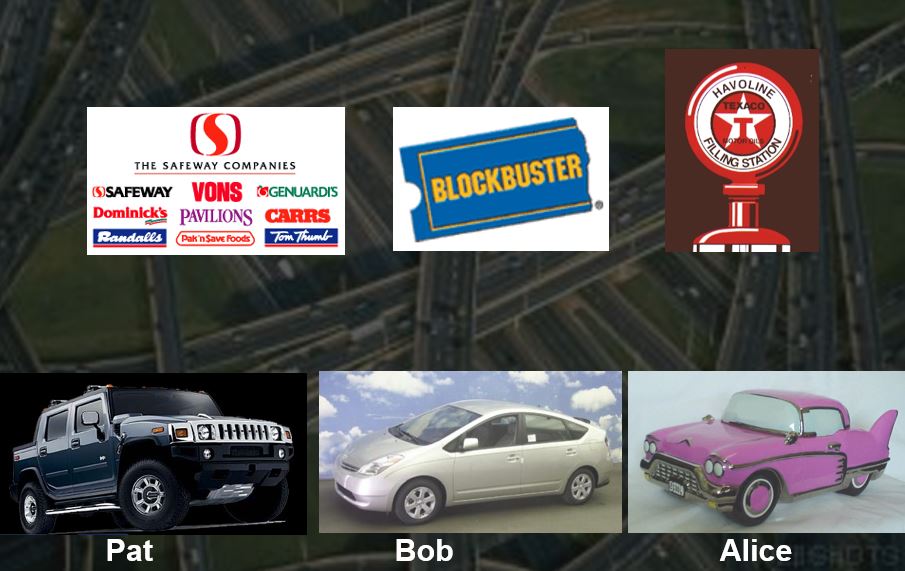CS 39: Symmetry & Topology
Lecture #7 -- Mon. 3/18, 2019.
PREVIOUS <- - - - > CS 39R HOME < - - - - > CURRENT < - - - - > NEXT
Preparation:
Prepare
the one-page, double-sided fact sheet.
Give
me two proposals of what you might want to do as a course
project.
Warm-up:
Discuss your genus-2 surface with your
neighbors.
What is its Euler Characteristic ?
Try to settle fundamental issues that are still unclear.
Discuss solutions to the last Homework on Surface Classification
Introduction to Graph Theory
Elements of a graph (G):
a set of Vertices (Points,
Nodes):
V(G) = {U, V, W, X, Y, Z ...}. [these are their
names].
a set of Edges (Links, Connections between
Vertices): E(G) = {(U,V), (V,W), (X,Y), (X,Z)
... }. [defined by their end points].
-- Loops are OK, e.g.: (U,U).
-- Multiple edges between vertices are OK, e.g.: {... (V,W),
(V,W), ...}.
{Typically NOT OK: isolated vertices; free floating
lines not anchored by nodes.}
What could be represented by the
vertices/nodes and by the edges/links ?
Think of a few things in your domain of
interest where a graph-representation may be
useful.
Some
Definitions:
A planar graph is one that can be drawn
crossing-free into the plane.
A complete graph, K#,
has exactly one edge between every possible pair of
vertices.
K2 has 1 edge; K3 has 3 edges; K4 has 6
edges; K5 has 10 edges; K6 has 15
edges; Kn has n(n-1)/2
edges ...
Which of these are planar?
An
Illustrating Exercise:
Pat,
Bob, and Alice live in three adjacent
locations as indicated at the bottom of
this slide.
They
all have spiffy cars and use them to go to
Safeway, Blockbuster, and the local gas
station.
They
don’t like each other and
therefore want their individual private
roads to the three shopping places.
And
these
roads must not cross each other!
Draw a possible road map!

The graph that you are trying to construct here is called
the "Utility Graph":
Given 3 utility sources {water, gas, electricity}; the
owners of 3 houses in a district with under-grounding
want individual (crossing-free) trenches from the 3
utilities to their homes.
It is also known as the "Bipartite Graph K3,3"
Preparing
for your Project Presentation (about 4 weeks from now):
I will collect your one-line proposals and give
you feedback by e-mail.
With this feedback start planning the outline of
a brief story that you think will be of interest to your
audience -- and fits into 15 minutes!
Prepare a 1-minute summary of the main point(s) of your
presentation.
Ask yourself: What does the audience already know, and what do
you need to tell them, so that they can understand your story?
What supporting material can make the presentation more
interesting -- or easier to understand?
Structure your presentation:
Introduction: Outline the main focal point of your
presentation.
Main Part: Tell your story; use supporting props.
Wrap Up: Repeat the main point(s) that you want your
audience to remember.
Knowing that you are well prepared: be confident in your
presentation.
Speak slowly, loudly, clearly!
THE QUIZ ! Chart of Cylinder
Symmetries
New Homework Assignment:
Due: Monday, April 1,
2019, before 10am.
Solidify your Course Project Proposal based on
my feedback to you (by e-mail):
Look up on Google what information various
permutations of your project title may bring forward.
Define some explicit questions that you want to answer in
your project,
and explain how you plan to analyze your findings and
results.
Also bring six small objects or models that demonstrate
these symmetries:
D1=C2; D2;
S2; D1d=C2h; C1h=C1v;
D1h=C2v.
Have a good Spring Break!
PREVIOUS <- - - - > CS 39R HOME < - - - - > CURRENT < - - - - > NEXT
Page Editor: Carlo H. Séquin